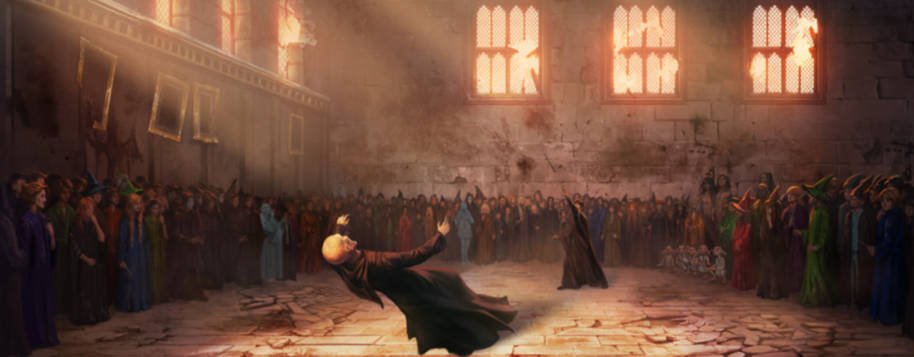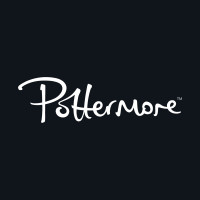
The always divisive Severus Snape had us guessing right until the very end about whose side he was really on – right into those climactic final chapters of Harry Potter and the Deathly Hallows. Although we now understand Snape’s twisted and complicated story, here’s a few extra things about him that you may not have known. And nope, sadly none of these facts have anything to do with the secrets of his greasy hair regime.
Alan Rickman knew Severus’s secrets before we did
I told Alan what lies behind the word 'always'. https://t.co/NHTJ5J6kxb
— J.K. Rowling (@jk_rowling) January 18, 2016
The late, great actor, who portrayed Snape through all eight Harry Potter films, was privy to some information about his character long before any of us knew what Snape’s fate would be. In an interview way back in 2011, Rickman revealed that J.K. Rowling had told him a future plot detail that helped him portray Snape’s ambiguity better. Years later, J.K. Rowling revealed what she told Rickman: the reason behind Snape saying ‘always’ to Dumbledore.
Tissue, anyone?
The etymology of his name is fitting
Most of the characters in Harry Potter have meanings behind their names that complement their characters’ personalities, and Snape’s name certainly suits him. The name ‘Severus’, as you might guess, roughly translates to ‘stern’ or ‘harsh’ in Latin, while ‘Snape’ means ‘to disgrace’, if you look at the old Norse term – ‘sneypa’.
J.K. Rowling has said that she took Snape’s name from an English village in Suffolk.
That fan theory about Snape being a vampire? Not true...
On a few occasions while reading the books, you’ll come across descriptions comparing Snape to a bat, be it Professor Quirrell calling him an ‘overgrown bat’ in Philosopher’s Stone, or his figure being called ‘bat-like’ when it's revealed he can fly unaided. This has led to theories from fans that Snape is bat-like for a reason: he’s a vampire. It’s a fair argument. Vampires do exist in the wizarding world after all – we bump into one called Sanguini in Harry Potter and the Half-Blood Prince.
But J.K. Rowling has since confirmed that Snape is not a creature of the night, after all, despite his appearance.
‘For a long time there was a persistent fan rumour that Snape might be a vampire,’ she wrote. ‘While it is true that he has an unhealthy pallor, and is sometimes described as looking like a large bat in his long black cloak, he never actually turns into a bat, we meet him outside the castle by daylight, and no corpses with puncture marks in their necks ever turn up at Hogwarts.’
So Snape was not a bloodsucker after all – he just liked to extract self-esteem from his students...
Harry once spent an evening in Snape’s family’s home town

Snape was a huge part of Harry’s life, from his younger days thinking Snape was evil to his adult days of realising the truth about Snape, even naming his son ‘Albus Severus’ in his honour.
Little did Harry know that he once spent an evening in Snape’s childhood town, Cokeworth, before even having met him. This is one of the places the Dursleys escape to when fleeing from the influx of Harry’s Hogwarts letters – but also where Petunia grew up with her sister, Lily. And who else did they grow up with? Severus Snape, of course. When Aunt Petunia refers to an ‘awful boy’ from her childhood with Lily, it took us a while to realise she was talking about Snape – not Lily’s future husband James Potter.
We revisit Cokeworth in the later books, where Severus makes an Unbreakable Vow with Bellatrix and Narcissa.
And Snape was the one who (inadvertently) taught Harry his most-used spell – the one that would end Lord Voldemort

Snape really did leave a mark on Harry in many ways. Not in a Voldemort-leaving-a-lightning-bolt-shaped-scar way, but with a number of subtleties we didn’t notice until years later.
One such imprint is the fact that Snape (albeit unintentionally) introduced Harry to ‘Expelliarmus’, his most-used spell, and the one that would eventually lead to the death of Lord Voldemort. He first saw Snape using the advantageous spell during Duelling Club in Harry Potter and the Chamber of Secrets. Over the ensuing years, Harry used ‘Expelliarmus’ so much Lupin once commented it had become known as his ‘signature’. Well, it certainly worked to Harry’s favour in the end.
Although Harry would have most likely learnt this spell elsewhere, it’s somewhat poignant coming from Snape, seeing as Snape was the one who told Lord Voldemort about the Prophecy that led Voldemort to marking Harry in the first place. Indeed, many of Snape’s actions directly or indirectly affected Voldemort and Harry’s arc.
J.K. Rowling once apologised for killing Snape
In 2017, J.K. Rowling marked the anniversary of the Battle of Hogwarts by apologising for killing off arguably the most divisive character in the series. Rowling agrees that Snape will always be too ‘grey’ to truly like, saying in one tweet, ‘You can't make him a saint: he was vindictive & bullying. You can't make him a devil: he died to save the wizarding world.’
Let the Snape debates roll on.
And what does Snape smell like, we hear you cry?
‘Bitterness and old shoes’, apparently.


